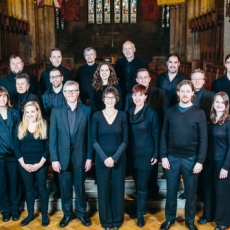Cappella Nova - MacMillan: Consecration - Gramophone
Linn’s survey of James MacMillan’s choral music with the Scottish professional chamber choir Cappella Nova has now reached its fourth instalment. ‘Consecration’ brings together a composer-curated selection of sacred choral pieces, many with family associations, most of which are receiving premiere recordings. As with the previous three releases, a setting of the Mass is included, in this case the popular and widely used parish St Anne’s Mass. Pithy, deceptively straightforward and unmistakably Caledonian in flavour, the highlight is a beautifully pastoral setting of The Lord’s Prayer.
This generously filled disc opens with an a cappella sequence, the five Culham Motets, composed for the consecration in 2015 of the new Catholic Chapel of Christ the Redeemer at Culham College. The substantial liturgical centrepiece is the third motet, ‘See the place where God lives’, which is not to belittle the other pieces since they all display MacMillan’s skill in expressing texts in their most passionate terms. By way of contrast, Lux aeterna, written for MacMillan’s father’s funeral, is sung with great flexibility by Rebecca Tavener, over an organ drone.
A Special Appeal sets a translation of part of Óscar Romero’s final sermon. This is the most overtly dramatic scena on the recording and also features an extraordinarily vivid organ part, played with great zest by Steven McIntyre. He also places the Peter Collins organ in Edinburgh’s Greyfriars Kirk firmly in the spotlight in a sparkling performance of the Albanian-influenced funky recessional, Kenga e Krushqve.
Alan Tavener’s 18 singers are on top form throughout, only very occasionally displaying some intonational strain when juxtaposed against the organ, for example in the closing bars of the Wedding Song. Their solo contributions are beyond reproach.
The concluding track, Sing joyfully to the Lord (2018), is an extended anthem containing much faster music than in the rest of the programme. It reveals a master at the top of his game, constantly refreshing his choral textures. Britten springs to mind, for example with the organ’s imitation of the harp.
This is an important release and would make an excellent stand-alone introduction to MacMillan’s distinguished and stimulating choral music. Strongly recommended.

